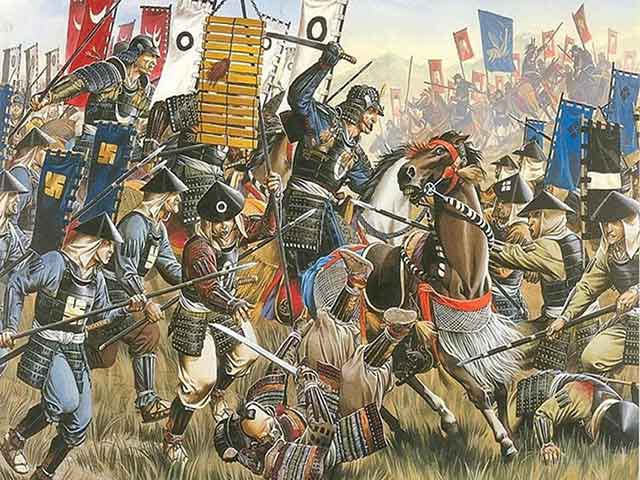
The Battle of Ukino, July 12, 1558, was a pivotal moment in Japanese history, and one of the most significant Samurai Battles to occur during the Sengoku period. This battle took place between the forces of the powerful warlord Oda Nobunaga and the Azai and Asakura clans, who were allied against him.
The Battle of Ukino was fought in the summer of 1558, near the Ukino River in Echizen province, which is now part of Fukui Prefecture. The conflict arose from a long-standing rivalry between Oda Nobunaga and the Azai and Asakura clans, who had previously been allies.
The Azai and Asakura clans, under the leadership of Azai Nagamasa and Asakura Yoshikage, respectively, were initially successful in the early stages of the battle. However, Oda Nobunaga was a cunning and ruthless tactician, and he soon gained the upper hand.
Despite being outnumbered, Oda Nobunaga was able to turn the tide of the battle in his favor through a combination of careful planning and decisive action. He divided his army into several small units, which he then used to launch a surprise attack on the enemy's flanks.
The Azai and Asakura clans were caught off guard by this tactic and were unable to mount an effective defense. As a result, Oda Nobunaga was able to inflict heavy losses on the enemy, and the battle ended in a decisive victory for his forces.
The Battle of Ukino, August 1558, was a brutal and bloody conflict that lasted for several hours. The Samurai warriors on both sides fought with incredible skill and courage, using a variety of weapons and tactics to gain the upper hand.
One of the most notable aspects of the battle was the use of firearms, which were becoming increasingly common during this period. Oda Nobunaga's forces were particularly adept at using firearms, and they were able to inflict significant damage on the enemy's ranks.
Despite their initial success, the Azai and Asakura clans were ultimately unable to withstand Oda Nobunaga's onslaught. The battle ended with a crushing defeat for the allied forces, and the Azai and Asakura clans were forced to submit to Oda Nobunaga's authority.
The Battle of Ukino, July 1558, had far-reaching consequences for Japan's history. Oda Nobunaga's victory at Ukino was a significant step towards his ultimate goal of unifying Japan under his rule. It also cemented his reputation as one of the most formidable Samurai warriors of his time.
In the years that followed the Battle of Ukino, Oda Nobunaga continued to expand his power and influence, using a combination of military might and political maneuvering to achieve his goals. His legacy as a great Samurai warrior and warlord is still celebrated in Japan today.
In conclusion, The Battle of Ukino, July 1558, was a pivotal moment in Japanese history and one of the most significant Samurai Battles of the Sengoku period. Oda Nobunaga's victory at Ukino was a major step towards his ultimate goal of unifying Japan under his rule, and it cemented his reputation as one of the greatest Samurai warriors of all time. The battle was a brutal and bloody conflict, fought with incredible skill and courage by both sides. Its impact on Japanese history cannot be overstated, and it remains an important part of the country's cultural heritage to this day.
See also
-
The Siege of Hara Castle

The Shimabara Rebellion of 1637–1638, which culminated in the siege of Hara Castle, was the last major uprising of the Edo period and had serious political consequences.
-
Battle of Tennoji
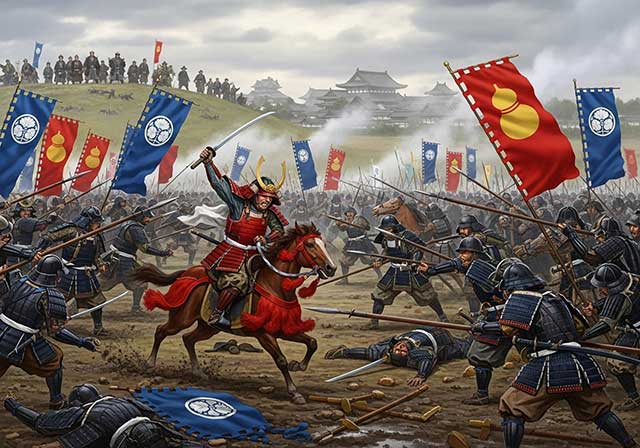
The confrontation between Tokugawa Ieyasu and Toyotomi Hideyori during the “Osaka Winter Campaign” ended with the signing of a peace treaty. On January 22, 1615, the day after the treaty was signed, Ieyasu pretended to disband his army. In reality, this meant that the Shimazu forces withdrew to the nearest port. On the same day, almost the entire Tokugawa army began filling in the outer moat.
-
Siege of Shuri Castle
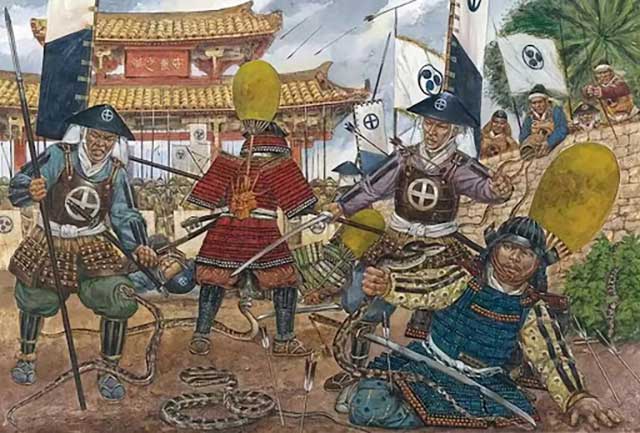
The Ryukyu Kingdom was established in 1429 on Okinawa, the largest island of the Ryukyu (Nansei) archipelago, as a result of the military unification of three rival kingdoms. In the following years, the state's control spread to all the islands of the archipelago.
-
The Siege of Fushimi Castle
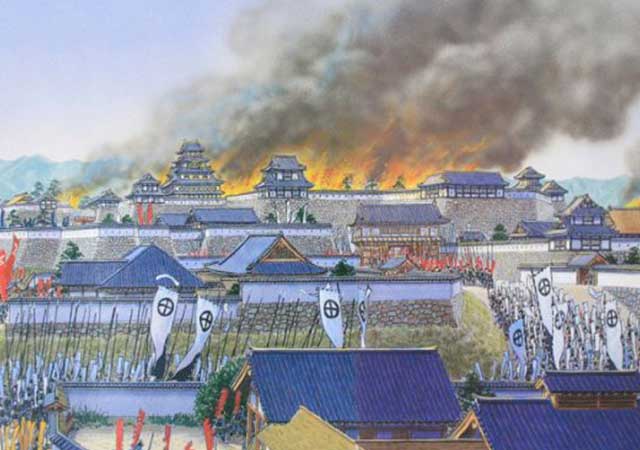
Fushimi can perhaps be considered one of the most “unfortunate” castles of the Sengoku Jidai period. The original castle was built by Toyotomi Hideyoshi in the southeast of Kyoto in 1594 as his residence in the imperial city.
-
The Siege of Otsu Castle
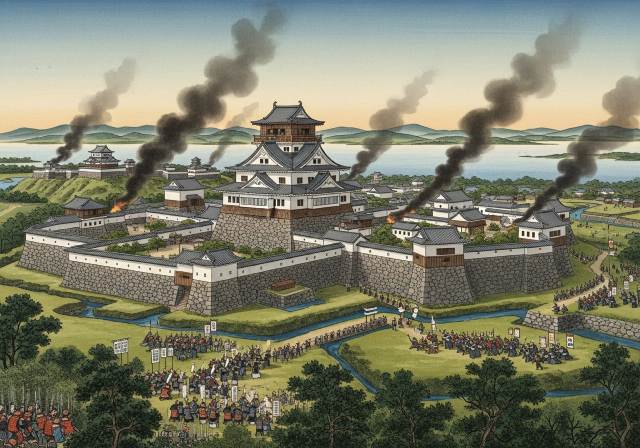
The siege of Otsu Castle was part of the Sekigahara campaign, during which the so-called Eastern Coalition, led by Tokugawa Ieyasu, fought against the Western Coalition, led by Ishida Mitsunari. Otsu Castle was built in 1586 by order of Toyotomi Hideyoshi near the capital Kyoto, on the site of the dismantled Sakamoto Castle. It belonged to the type of “water castles” — mizujō — as one side of it faced Japan's largest lake, Lake Biwa, and it was surrounded by a system of moats filled with lake water, which made the fortress resemble an island.
-
The Siege of Shiroishi Castle
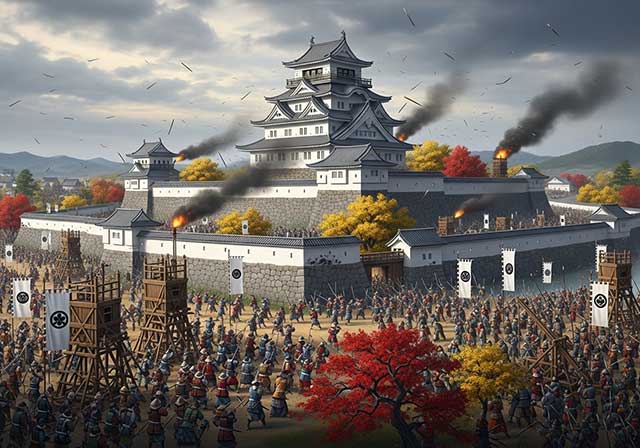
The siege of Shiroishi Castle was part of the Sekigahara campaign and took place several months before the decisive battle of Sekigahara. The daimyo of Aizu Province, Uesugi Kagekatsu, posed a serious threat to Tokugawa Ieyasu's plans to defeat the Western Coalition, and Ieyasu decided to curb his actions with the help of his northern vassals. To this end, he ordered Date Masamune to invade the province of Aizu and capture Shiroishi Castle.
-
The Second Siege of Jinju Castle
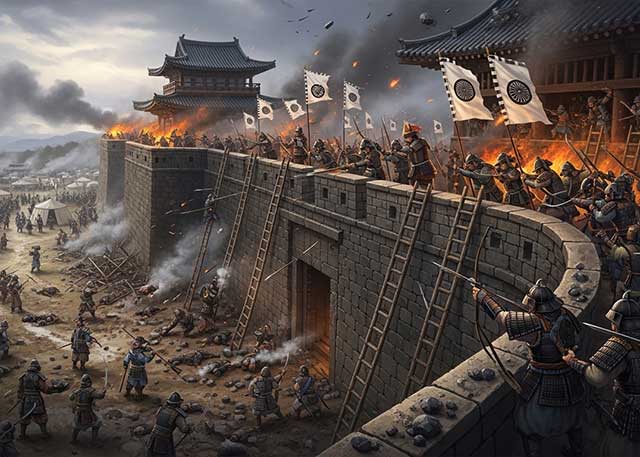
During the two Korean campaigns of the 16th century, the Japanese repeatedly had to capture enemy fortresses and defend occupied or constructed fortifications from the combined Korean and Chinese forces. Among all the operations of that time, the second siege of Jinju Castle is considered the most interesting from the point of view of siege warfare.
-
The Siege of Takamatsu Castle
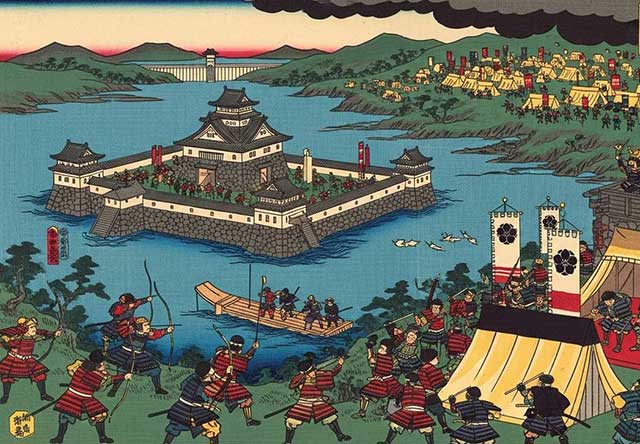
The siege of Takamatsu Castle in Bitchu Province is considered the first mizuzeme, or “water siege,” in Japanese history. Until then, such an original tactic had never been used.

